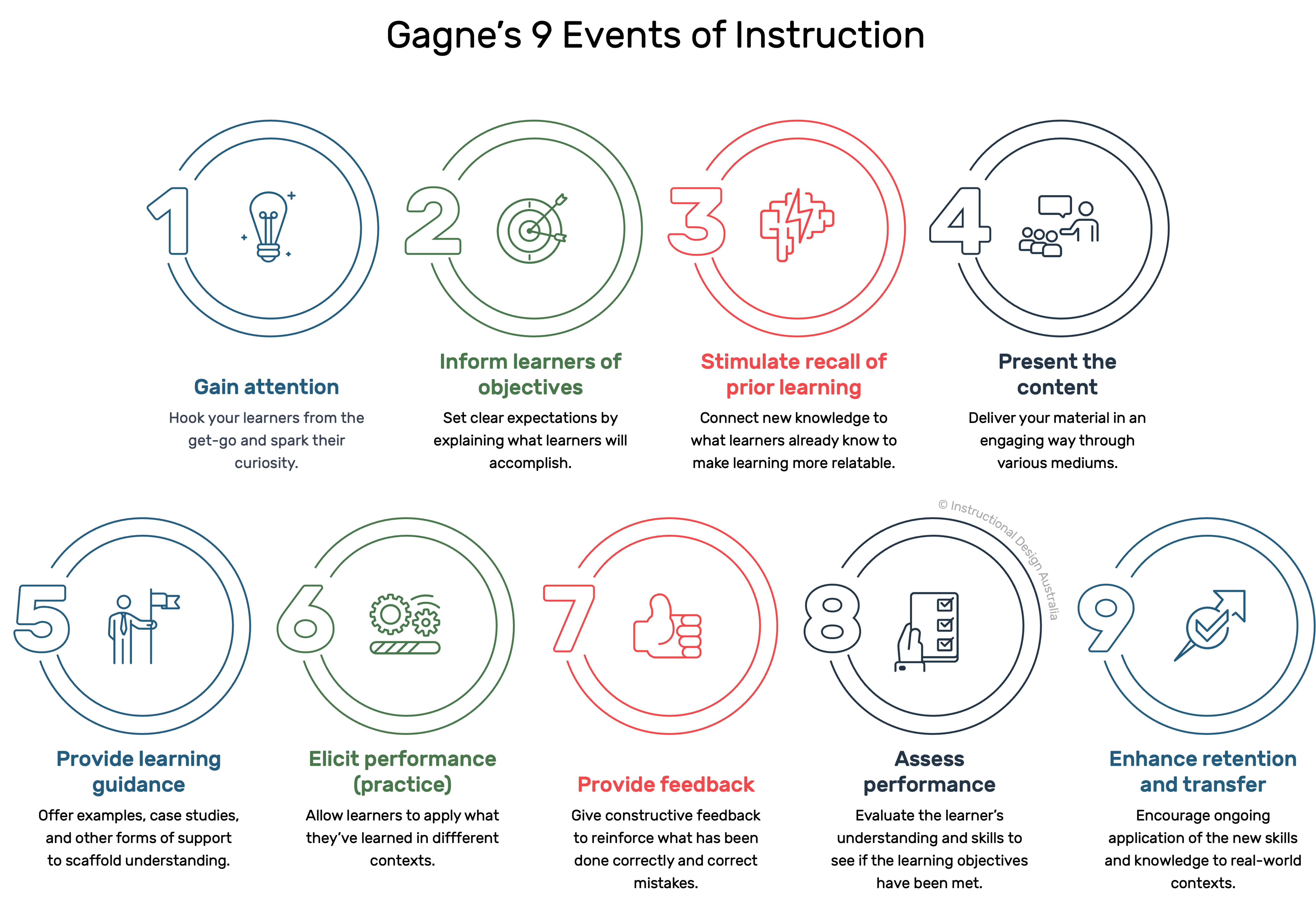Gagne’s 9 Events of Instruction

1. Gain attention
The first step is to capture the learner's interest. This can be done through a surprising fact, an intriguing question, or a compelling story. For example, in a course on environmental science, an instructional designer might start with a startling statistic about global warming or a short video showing the impact of climate change.

2. Inform learners of objectives
Once the learners' attention is captured, they should be informed about what they will learn and what they will be able to do after completing the instruction. For instance, in a corporate training module, the designer might state, "By the end of this session, you will be able to use the new inventory management software efficiently."

Stimulate recall of prior learning
Link new concepts to previously acquired knowledge. For example, in a digital marketing course, begin a lesson on SEO (Search Engine Optimisation) by revisiting the basic marketing principles covered earlier, such as target audience identification, which is crucial for understanding SEO strategies.

Elicit performance (practice)
Design activities for learners to apply what they've learned. In a first aid training program, have learners simulate emergency response scenarios.

Provide feedback
Give learners insights into what they are doing right and where they need improvement. In an e-learning quiz, offer immediate feedback after each question, explaining why answers are correct or incorrect.

Assess performance
Test learners to ensure they've met the learning objectives. In a corporate compliance course, this might be a final test covering all key training points.

Enhance retention and transfer
Encourage learners to retain information and apply it in real-world contexts. In a leadership development program, have learners develop a personal action plan to apply the skills learned in their teams.

Assess performance
Evaluate learners to confirm they've met the objectives. In a foreign language class, this could be a conversational test where learners demonstrate their ability to communicate in the new language.

Enhance Retention and Transfer
Help learners apply what they've learned in real situations. In a management training program, encourage participants to implement a project that uses the team-building strategies they learned, and then discuss the outcomes in a follow-up session.
Incorporating Gagne’s 9 Events of Instruction into the instructional design process can significantly improve the effectiveness of learning interventions. These principles are not just steps but a philosophy that emphasises the importance of a learner-centric approach. By leveraging these principles, instructional designers can create learning experiences that are engaging, practical, and transformative, ensuring that learners are not just passive recipients of information but active participants in their own learning journey.

